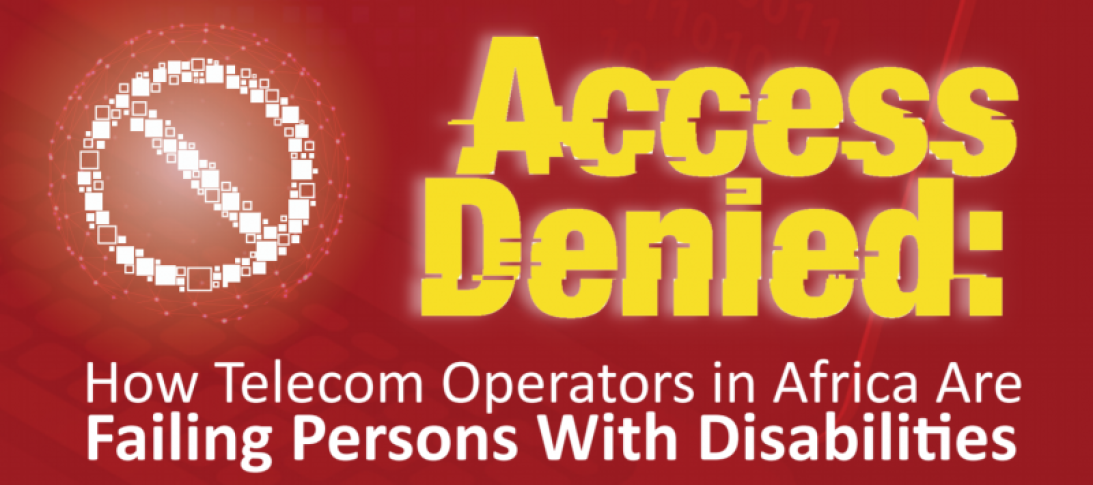
Today, the Collaboration on International ICT Policy for East and Southern Africa (CIPESA) has released a new report which shows that several telecom companies in Sub-Saharan Africa have failed to meet their obligations to provide information and services to persons with disabilities. The report assessed 10 telecom companies in five countries: Botswana, Kenya, Nigeria, South Africa, and Uganda and was based on guidelines from the International Telecommunications Union (ITU) Model Accessibility Policy 2014, the World Wide Web Consortium’s Web and Mobile Content Accessibility Guidelines, and the United Nations Convention on the Rights of Persons with Disabilities (CRPD).
Most of the companies assessed – despite being long-established operators with the majority market share in their respective countries – failed to prioritise the needs of telecom customers with disabilities in contravention of the companies’ obligations under national laws and the CRPD.
Safaricom in Kenya and Vodacom South Africa were found to be leading in improving accessibility of communication products and services for persons with disabilities. The good performance by Safaricom and Vodacom in comparison to other companies reviewed appears to be driven by the policies and culture of the Vodafone group to which both belong and not by regulations or regulators in Kenya and South Africa.
MTN’s operations in Nigeria, South Africa, and Uganda, as well as Airtel’s operations in Nigeria and Uganda seemed to give low consideration to accessibility of their services by persons with disabilities. This was evidenced by the consistent non-compliance with the accessibility indicators covered in the study across the countries where MTN and Airtel operated.
The report was launched at the Forum of Internet Freedom in Africa 2020 (FIFAfrica20) as part of commemorations of the International Day for Universal Access to Information (September 28). The findings featured in panel discussions on how Covid-19 has accelerated the digital exclusion of persons with disabilities, which is undermining a key pillar of the 2030 Agenda for Sustainable Development Goals (SDGs) – the pledge to leave no one behind.
Given the critical role the telecom industry plays in providing information and communication services, it is of utmost importance that it takes deliberate measures to promote accessibility of its products and services. The industry also needs to create awareness of accessible mobile communications among persons with disabilities, their caregivers, and organisations of persons with disabilities (DPOs).
Recommendations
1. Telecom operators need to address concerns of persons with disabilities regarding their services and products, including through provision of information in accessible formats such as Braille, large print, visual and audio formats; understand the numbers and needs of their customers with disabilities so that they build focused products and services to suit these customers; ramp up sensitivity training for their staff, including in basic sign language.
2. Government agencies such as communication regulators and consumer protection units should enforce legislation on accessible communication products and services. More vigilance is needed in enforcing implementation of national disability laws, Codes of Practice, consumer rights regulations, and ICT and disability policies.
3. Safaricom and Vodacom South Africa provide learning examples for other operators on proactively improving digital accessibility and building partnerships that improve service provision to persons with disabilities. Regulators also need to learn from these examples to offer guidance to operators in their jurisdictions.
4. Telecom companies should form partnerships with academia, civil society, DPOs, tech developers and innovators and device manufacturers to develop accessible mobile communication solutions.
5. Governments should offer incentives for investment and innovation in accessible mobile devices and software solutions to encourage the development and availability of such technologies and solutions. Examples of such incentives are tax exemption on handsets/mobile devices tailored to the needs of persons with disabilities.
The full report can be found here.